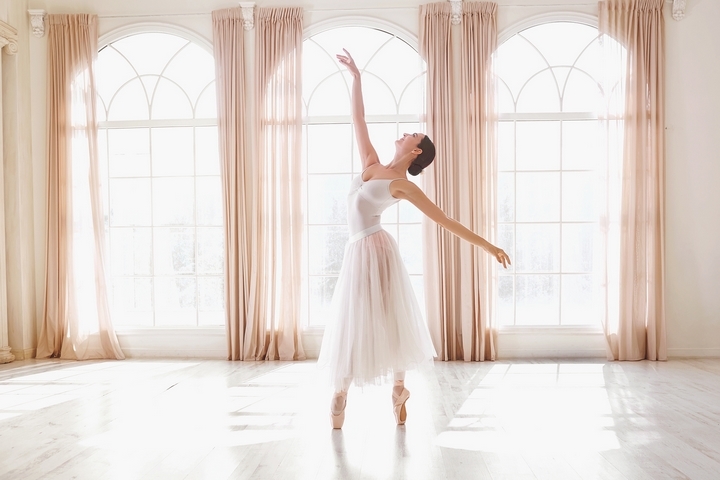Ballet is an ancient form of artistic dance which involves gracefully transitioning between various ballet body positions. Grace and coordination in ballet are sharpened by repeated practice and a focus on technique. Performing graceful dances requires strong muscles and a flexible body.
Practicing ballet helps you develop a strong core which you’ll use to stabilize your body in all sorts of unique positions. Mastering different ballet body positions help you create graceful performances for your audience. Let’s discover the key ballet body positions that you’ll find in modern dances.
1. Feet Positions
Mastering the art of ballet starts with learning basic feet and arm positions. The five basic foot positions in ballet are used as a foundation in complex routines to keep all dancers in sync.
Developing the ability to quickly transfer through all five feet positions will help improve your skill as a dancer. The first position involves keeping your heels together and your feet pointed outward in a straight line. On the other hand, the fifth position involves having both feet pointed outward with the joint of your big toe slightly extending past your heel.
Switching between such drastic positions requires repetition and mindful practice. You’ll use the turnout technique when switching positions, which involves rotating your leg from the hip joint. Fortunately, you can practice by using a dance barre.
2. Arm Positions
Another great way to improve your overall skill as a ballet dancer is to master the five basic arm positions. Depending on your ballet school’s method, there will be slight variations in each of the five positions.
Mastering how you move your arms as a dancer is crucial to telling the story of your dance to the audience. Having your arms in sync with the rest of your body helps create a forced perspective for the audience and adds fluidity to your performance. For complex dances, your arms will help you perform jumps and spins while giving you the momentum to turn longer and faster.
Taking the time to practice your arm and feet positions will provide you with the muscle memory to execute complicated moves.
3. En Face
En face is one of the most used ballet body positions across all dances. En face is French for “in front,” which is appropriate as the move means to face the audience. Turning and facing the audience in sync with the other dancers is crucial to immersing the audience in your dance routine.
Practicing en face is important to ensure you can quickly face the audience in a straight line without swinging your body in a different direction.
4. Ecarté
Ecarté comes with the French word for discarded, highlighting the separation of your body in this position. While in Ecarté, the dancer will assume the second leg position with their legs in the air or on the floor.
The next step is to have your body slightly lean away from your lead leg in the second position to create a diagonal angle. Many variations of the ecarté position can be performed with your feet on the ground or in the air.
5. Epaulé
Epaulé is a position that highlights the location of the dancer’s shoulders, head, and neck. Epaulé comes from the French word for shoulder, and this position is often literally translated as “shouldering.” Epaulé is an important position for highlighting artistic expression and displaying grace in your movements.
This position focuses on the body’s alignment, starting with having your hips and belly button facing the corner of the room with your head slightly turned over your shoulder. Core strength is important in this position as you’ll use your sternum to lift your body upwards and complete the movement.
A strong core prevents your hips from pulling your body off center and makes it easier to maintain the upper body twist.
6. À La Seconde
Another one of the most common ballet body positions is á la seconde. This position involves combining the second leg position with the second arm position. Your lead leg will face the audience in this position while extended in the second position.
Á la second is usually performed on tendu, which means your leg is fully extended until only the tip of your toe makes contact with the floor.
7. Croisé Devant
The Croisé Devant position comes from the French word for crossed and is a variation of en face. The goal of the croisé devant position is to face the audience at a sharp angle. Croisé devant often involves using the fourth or fifth-foot position.
Performing croisé devant in the fourth position creates the illusion that your legs are crossed to the audience when your lead leg is closest to the audience.

